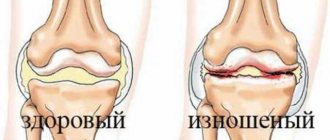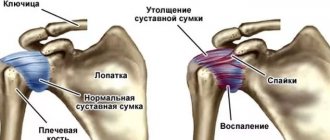An important role in the life of a modern woman is played by the state of her hormonal levels. The ability to reproduce, well-being, and beautiful appearance depend on it. Hormones are a factor that characterizes the quality of processes occurring in the female body.
A woman's hormone levels may vary depending on her age and the phase of the menstrual cycle. There are also certain differences in hormone levels in women after menopause.
Too high or low amounts of hormones may indicate the presence of diseases or problems with metabolic processes. If the body fails to produce hormones, this can cause infertility.
Background research allows you to determine the level of hormones and detect problems in the functioning of organs and systems. Timely diagnosis makes it possible to establish the cause of diseases and prevent their development. Only a qualified doctor can accurately assess test results and prescribe effective treatment.
general information
A woman's ovarian cycle and fertility are controlled by LH and FSH, and their secretion is controlled by sex hormones. Luteotropin stimulates ovarian activity to secrete estrogen. Its peak concentration stimulates the ovulatory process, as well as the process of luteinization, when the follicle becomes the corpus luteum (temporary endocrine gland). The corpus luteum produces progesterone, a hormone necessary for the successful attachment of the embryo to the endometriotic layer of the uterus. Therefore, if pregnancy does not occur, it is important to make sure that the progesterone test is normal. If implantation has occurred, then LH contributes to the normal functioning of the corpus luteum. LH stimulates the theca cells of the ovaries, which produce androgens (male gonadosteroids) from which estradiol is formed - the most active hormone from the estrogen group (read more about the hormone estradiol and how to properly take the test for women - note altravita-ivf.ru).
Under the influence of FSH, follicles form and mature, ovulation occurs with a peak release of follitropin, and libido decreases or increases. Gonadotropic hormones affect regulation, physical development, puberty, the appearance of secondary sexual characteristics, the ability to become pregnant, bear and give birth to a child.
What the results say
The norm values depend on what indicators are used in a particular laboratory, therefore the interpretation
Only a doctor can
review test results The test may show an abnormal decrease or increase in the patient's TSH level.
Test results for the thyroid-stimulating hormone TSH may fall below normal in the following situations:
- cachexia;
- hyperthyroidism in pregnancy;
- mental illnesses, deviations;
- autoimmune thyroiditis with signs of thyrotoxicosis;
- Plummer's disease (thyrotoxic adenoma);
- TSH-independent thyrotoxicosis;
- diffuse toxic goiter.
Also, TSH levels may increase, exceeding the norm. Elevated
TSH test
results may indicate that the patient has the following problems:
- preeclampsia;
- mental illnesses, disorders;
- lead poisoning;
- adrenal insufficiency;
- lung tumors (thyrotropin-secreting);
- secondary or primary hypothyroidism;
- syndrome of unregulated secretion of thyroid-stimulating hormone;
- Hashimoto's thyroiditis;
- pituitary tumor (basophilic adenoma, thyrotropinoma).
An increase and decrease in thyroid-stimulating hormone levels indicates a malfunction of the patient’s thyroid gland. However, it is often not possible to accurately and correctly determine the cause of deviations using only a single analysis of the degree of concentration of TSH in the body. Therefore, along with this study, doctors often recommend that patients undergo tests for
triiodothyronine (T3), thyroxine
(T4).
Hormonal influence on the menstrual cycle
Depending on the content of LH, FSH, and estrogens in the blood, the menstrual cycle in women is divided into three phases, one replacing the other:
- Follicular (menstrual) - average duration 2 weeks (7-22 days), the end of the ovarian cycle. It begins on the first day of menstruation, when the functional layer of the endometrium is shed, coming out with menstrual blood and glandular secretions. During this phase, the dominant follicle matures, which has the largest number of FSH receptors and produces estradiol more than other follicles. The menstrual phase ends with a sharp release of LH from the pituitary gland, which gives rise to the next phase - the ovulatory phase.
- Ovulatory (proliferative) phase - average duration is approximately 3 days. The dominant follicle finally matures and becomes a Graafian vesicle, capable of admitting the egg. The ratio of FSH and LH changes. The phase is characterized by a wave-like release of LH, which stimulates active substances (prostaglandins and enzymes) that promote rupture of the walls of the Graafian vesicle and the release of the egg, that is, ovulation. This period is characterized by a decrease in estradiol and the development (not in all cases) of ovulatory syndrome. Many women feel ovulation by the appearance of pain in the lower abdomen and lower back. Ovulation occurs after the peak release of luteinizing hormone within 16-48 hours. Follicular fluid (5-10 ml) comes out with the egg.
- The luteal (secretory) phase - the average duration is 2 weeks, this is the most stable period of the cycle - the corpus luteum phase. After ovulation, the vesicle transforms into the corpus luteum, which secretes progesterone (called the pregnancy hormone), androgens (male steroids), and estradiol. Under the influence of these hormones, the endometrium thickens, secretes secretions, and prepares for the attachment of the oocyte.
At the end of the luteal phase, at the peak of the release of sex hormones, the production of FSH and LH decreases. If conception does not occur, the corpus luteum stops synthesizing estrogens and progesterone, after which it is destroyed. The negative feedback is interrupted, which contributes to the growth of LH and FSH and the beginning of a new cycle.
Development of the endometrium under the influence of hormones
Normal levels of gonadotropins
The secretion of FSH and LH is characterized not so much by a circadian rhythm (daily) as by an hourly rhythm (circhoral). Their level depends on the time of day, phase of the cycle, woman’s age, and estrogen production.
| Age period, cycle phases | Reference (average) values of FSH, IU/ml | Reference values of LH, IU/ml | Estradiol reference values |
| Girls before puberty (up to 9 years) | 0,11-1,6 | 0,7-1,3 | |
| Teenage girls (12-16 years old) | Up to 3.5 | ||
| Women of reproductive age (up to 40 years), follicular phase | 2,8-11,3 | 1,1-11,6 | 57-226 pg/ml |
| Ovulatory phase | 5,8-21 | 17-77, ovulatory peak – up to 150 | 127-476 pg/ml |
| Luteal phase | 1,7-9,0 | 2-17 | 77-226 pg/ml |
| Menopause | Up to 150 | 0,03-3,9 | |
| Postmenopause | 21,7-153 | 11,3-40 |
TSH remains stable - 0.4-4.0 µIU/ml, prolactin - 400-1000 IU/l.
Indications for taking hormone tests
References
- Freedman, D., Halsall, D., Marshall, W. et al. Thyroid disorders. In: Rifai N, Horvath AR, Wittwer CT, eds. Tietz Textbook of Clinical Chemistry and Molecular Diagnostics. 6th ed. Elsevier, 2018. - Vol. 1572-1616.
- Dunlap, D. Thyroid Function Tests. In: Walker HK, Hall WD, Hurst JW, editors. Clinical Methods: The History, Physical, and Laboratory Examinations. 3rd edition. Boston: Butterworths, 1990. - Ch. 142.
- Burr, W., Ramsden, D., Evans, S. et al. Concentration of thyroxine-binding globulin: value of direct assay. Br Med J, 1977. - Vol. 1(6059). - P. 485-488.
- Singh, A., Etta, K. Thyroid hormone levels in Nigerians living in endemic goitrous and non-goitrous areas. Trop Geogr Med, 1978. - Vol. 30(2). — P. 235-40.
Gonadotropin ratio
LH and FSH are in a close, complex “inverse” relationship with gonadosteroids, sex hormones produced by the ovaries. A decrease in estrogen concentration stimulates the pituitary gland to produce FSH and LH. Therefore, when gonadosteroid production is low, gonadotropin levels increase.
For the productive activity of a woman’s reproductive system, not only the level of gonadotropins is important, but also the ratio of LH and FSH, which changes depending on the phase of the cycle. In the follicular phase, the concentration of FSH is higher, in the luteal phase - LH. The LH to FSH ratio is normally 1.5-2. If the ratio of gonadotropic hormones exceeds 2.5, this is regarded as a pathological deviation.
If the ratio of LH and FSH is not normal, this may indicate the following disorders:
- pituitary benign tumors;
- PCOS;
- endometriosis;
- dysfunction of the hypothalamic-pituitary complex;
- premature ovarian failure;
- obesity.
If the ratio of LH to FSH is disturbed for a long time at high levels of luteotropin, then activation of the ovaries leads to increased production of androgens.
This disrupts the ovulatory process and negatively affects the menstrual cycle, which becomes irregular. Ultimately, an incorrect ratio of LH to FSH can lead to impaired fertility and infertility. When the ratio of gonadotropic hormones is less than 0.5, the maturation of the egg and primordial follicles is disrupted. The ratio of LH towards a stable increase in the FSH hormone may be a sign of menopause.
Phases of the menstrual cycle
Features of the study
Analysis for LH and FSH is necessary for diagnosing infertility, identifying the causes of menstrual disorders, determining ovulation, and monitoring hormonal stimulation during IVF.
For analysis, the doctor assigns the woman a specific date, approximately the 3-7th day of the onset of menstruation. Preparation for the procedure is carried out 3 days in advance. At this time, physical and psycho-emotional stress, sports activities, physiotherapy, thermal procedures, and intimacy are excluded. Venous blood is collected in the morning on an empty stomach; smoking and drinking water are prohibited.
To determine the level of LH and FSH, serum or blood plasma is analyzed using the immunochemiluminescence method, which allows even frozen samples to be examined.
If a woman has an irregular, too long or short cycle, then a single test may produce false results. To get more reliable results, do 2-3 samples at half-hour intervals. For analysis, samples of all sera are combined.
The results of studies of the hormone FSH and luteotropin may be distorted not only due to an unstable cycle.
They can be affected by hormonal or radioisotope drugs taken by the patient, pregnancy, an MRI or radiation therapy session performed the day before, drinking alcohol, smoking, severe stress, taking medications that affect the production of gonadotropic hormones, anticonvulsants, and oral contraceptives.
Calculate dates suitable for taking tests
Results sent successfully. Please check your email.
How to decipher the results of several tests for the hormone TSH
Deviations in the level of concentration of thyroid-stimulating hormone in the patient’s body from the norm in one direction or another directly indicate only malfunctions in the functioning of the thyroid gland. To determine the exact cause of such failures, the doctor, in most cases, together with a TSH test
prescribes tests for the patient for levels T3,
T4.
- Primary hypothyroidism is determined by normal or decreased T3 and T4, increased TSH.
- Secondary hypothyroidism is diagnosed when T3, T4, and TSH levels are reduced.
- Hyperthyroidism is determined by increased T3, T4, decreased TSH.
TPO-AT tests may also be required for accurate diagnosis of hypothyroidism or hyperthyroidism.
, AT-TG, exceeding the norm indicates subacute or autoimmune thyroiditis.
Reasons for the increase and decrease in gonadotropins
With tumors, tumor-like formations of the gonads, benign neoplasms of the pituitary gland, insufficiency of the hypothalamic-pituitary complex, prolonged hormone therapy, the production of FSH and LH can either increase or decrease. A low level, as well as the ratio of luteinizing hormone and FSH, is affected by a strict diet, fasting, malignant tumors of any location, adrenal tumor, pituitary necrosis. An increase in the concentration of gonadotropic hormones is affected by alcohol or nicotine addiction, ovarian malformations, depletion of their function, removal of the gonads, menopause, and severe renal failure. Violation of hormone production leads to endocrine infertility. If you have a menstrual cycle disorder or the inability to conceive a child, contact the AltraVita clinic. Our doctors specialize in solving these types of problems. They have successful experience in treating endocrine infertility. Here you can get tested for estrogens, luteotropin, and donate blood for FSH.
Why is a blood test for the hormone TSH performed?
A doctor may order a patient to take a thyroid-stimulating hormone blood test in the following situations.
- The need to check the condition of the thyroid gland, suspicion of the development of diseases associated with this organ in a person.
- The need for control over the treatment of thyroid diseases.
- To identify female infertility and select the optimal treatment method for this problem.
A blood test for the hormone TSH can be prescribed by a gynecologist or endocrinologist.










